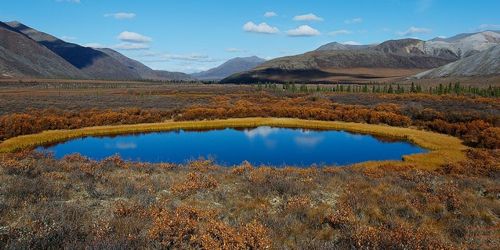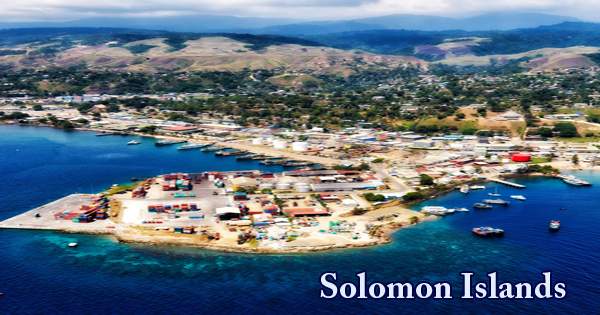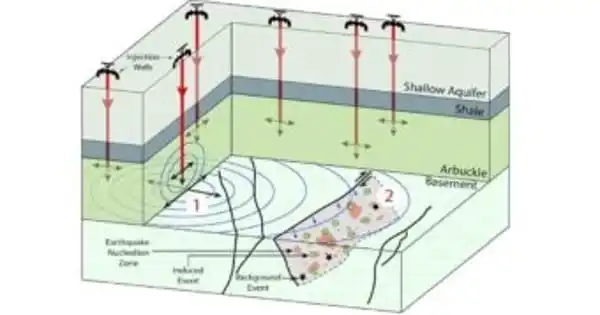What is Permafrost?
Permafrost is a thick subsurface layer of soil that remains frozen throughout the year, occurring chiefly in Polar Regions. It is defined as ground (soil or rock and included ice or organic material) that remains at or below 0°C for at least two consecutive years. Lowland permafrost regions are traditionally divided into several zones based on estimated geographic continuity in the landscape.
Key points are:
- Any rock/soil at or below the freezing point of water.
- Remains below 0 degrees Celsius continuously for two years.
- Ice is not necessarily present.
- The ‘active layer’ is the overlying surface that freezes in the winter, and thaws in the summer.
Types of Permafrost
- Cold Permafrost: Tolerates considerable heat without thawing. Remains between 10 – 30°F.
- Warm Permafrost: Introducing very little heat may cause thawing. Just below 34°F.
- Ice Rich: 20% – 50% visible ice.
- Thaw-Stable: Permafrost in bedrock is well-drained. Coarse grained sediments.
- Thaw-Unstable: Poorly drained, fine-grained sediment (clays and silts). Thawing results in so much moisture that it flows.
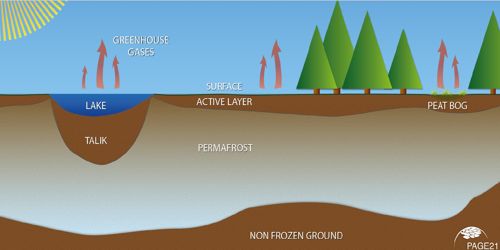
Thermokarst Lakes
Thermokarst lakes dominate large areas of the Arctic land surface and may expand as permafrost continues to warm and thaw. We will explore a new frontier in polar science: the relation of thermokarst lakes to global climate change.
- Formed in depressions by melting from thawing permafrost
- Freshwater and usually Shallow
- Solifluction – Slow down slope flow of saturate unfrozen earth minerals
Zones of Permafrost
Most permafrost can be differentiated into two broad zones; the continuous and the discontinuous, referring to the lateral continuity of permafrost. In the continuous zone of the far north, permafrost is nearly everywhere present except under the lakes and rivers that do not freeze to the bottom.
- Continuous Zone – Permafrost is found almost everywhere in the zone.
- Discontinuous Zone – Permafrost found in spots in the zone.
- Sporadic Zone – Permafrost found isolated in small spots of the zone.
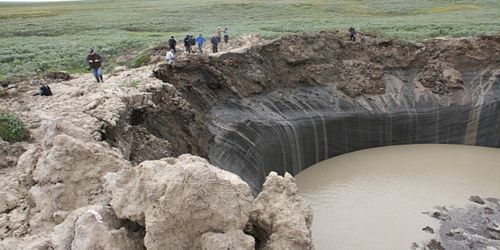
Construction on Permafrost
Heat from a building or other constructed article will cause thawing, and can result in sinking. For construction outside the permafrost regions it is usually believed that all the load from a structure is transmitted through the base of the foundation to bearing ground while ground in contact with the sides of a foundation only occasionally carries a vertical load (as with piles and deep foundations). The interaction between foundations and ground is assessed differently in the regions of deep seasonal freezing and of permafrost.
Three solutions are common:
- Using foundations on wood piles
- Building on a thick gravel pad
- Using anhydrous ammonia heat pipes
Additionally, sinking can be prevented by using stilts that extend to a depth of over 15 meters.
The Alaska Pipeline
- Approximately 75% passes through permafrost terrain.
- Special designs are created to account for the movement, melting, and freezing characteristics of the ground.
- There are three principal designs used to construct the pipeline. The design varies from area to area.
Pipeline Designs
Above-ground pipeline: Problems from melting are avoided in thaw-unstable areas by placing the pipeline on an elevated support system above ground.
Below-ground, conventional burial: In areas where thaw-stable or unfrozen ground is encountered, the pipeline can be buried with no special provisions.
Below-ground, special burial: Where thaw-unstable permafrost is encountered, but the pipeline must be buried for highways, animal crossings, rockslides/avalanches, etc.
The pipeline is insulated so that the heat it produces does not promote melting.
Ecological Problems
- Animals will not be able to effectively burrow or create dens.
- Plant roots are constrained to grow in a near-surface pattern.
Conclusion:
Permafrost is sensitive to climate changes and human activities mainly through changes in active layer thickness and permafrost temperatures. Melting of ground ice near the permafrost table produces uneven thaw settlement and thermokarst, producing great threat to infrastructure and engineering constructions over permafrost
Information Source:
